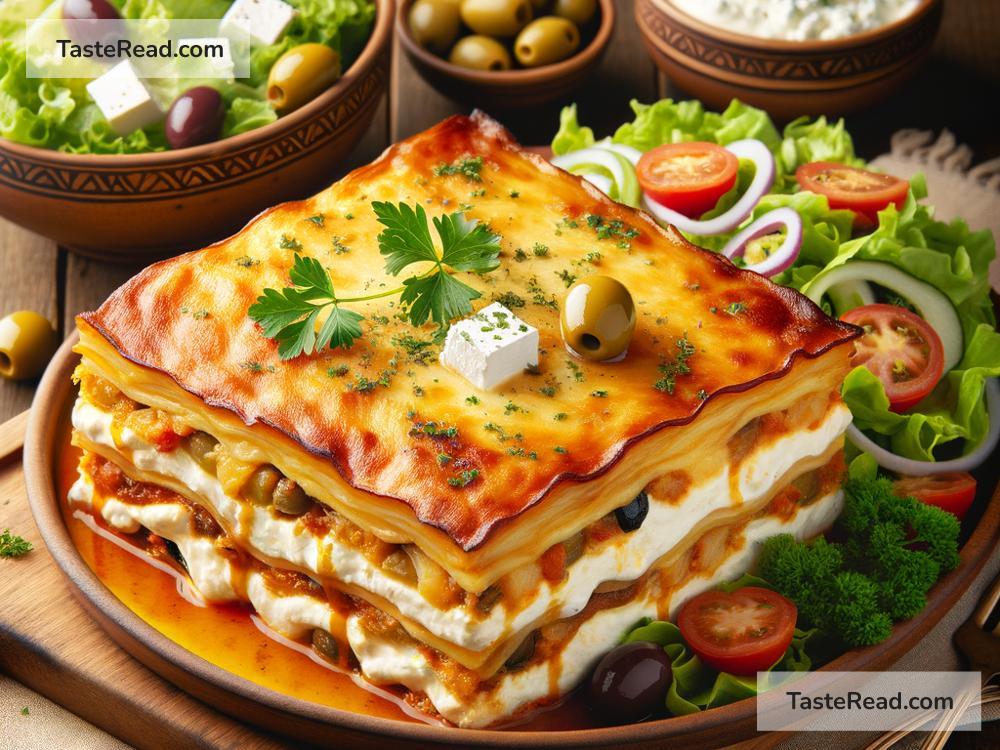Indulging in the Creamy Delicacies of Greek Moussaka Variations
When it comes to comfort food, few dishes can rival the rich, warming flavors of Greek moussaka. This traditional dish has captured the hearts of food lovers around the globe with its creamy texture, savory layers, and unique Mediterranean flair. Whether you’re a true food enthusiast or someone just looking to try something new, moussaka is a dish that you’ll want to experience. In this blog post, we’ll dive into the creamy world of moussaka and explore how different variations of this dish can make your taste buds dance with joy.
What Is Moussaka?
Moussaka is one of Greece’s most iconic dishes, often compared to lasagna due to its layered structure. Traditionally, it consists of eggplant, ground meat (typically beef or lamb), and a luscious béchamel sauce, all baked together to perfection. It’s a dish with a warm and inviting taste that showcases the flavors and ingredients of Greece.
The star of moussaka is definitely the béchamel sauce. Made with butter, flour, and milk, this creamy topping covers the dish like a soft, golden blanket. When baked, it becomes slightly browned and crispy, adding a heavenly finish that complements the savory layers below.
The Traditional Greek Moussaka
The classic Greek moussaka is a staple in Mediterranean cooking and one you’ll likely find in every Greek household or local tavern. Traditionally, the dish begins with thinly sliced eggplant, which is prepared by lightly frying or baking to soften its texture and enhance its flavor.
The meat layer consists of ground lamb or beef sautéed with onions, garlic, tomatoes, and spices like cinnamon and allspice. These traditional seasonings bring depth and warmth to the dish, giving it an unmistakable Mediterranean character.
The final touch is the creamy béchamel sauce. It’s poured generously over the layers and baked until the moussaka becomes a bubbling masterpiece. The textures of the dish—soft eggplant, flavorful meat, and silky béchamel—create a comforting meal that feels like a warm hug.
Exploring Moussaka Variations
One of the best things about moussaka is how versatile it is. Although the traditional version is beloved and timeless, chefs and home cooks alike have experimented with different ingredients and techniques to create new and exciting variations on the classic dish. Let’s take a look at some of these creative twists.
1. Vegetarian Moussaka
For those who prefer plant-based meals, vegetarian moussaka is a delightful option. In this version, the meat is replaced by lentils, mushrooms, or chickpeas, all of which mimic the meaty texture while adding their own unique flavors. Instead of béchamel sauce, some vegetarian versions use a dairy-free alternative, such as almond milk or a cashew-based cream.
The vegetarian moussaka retains the rich flavors of the traditional dish, but offers a lighter, fresher take. It’s perfect for anyone seeking a comforting meal without the heaviness of meat.
2. Potato-Based Moussaka
If you’re not a fan of eggplant or just want to try something new, potato-based moussaka might be your next favorite dish. In this variation, layers of thinly sliced potatoes replace the eggplant. The result is even heartier, as the potatoes soak up the flavors of the meat and spices while providing a soft, creamy texture.
Potato-based moussaka pairs well with the savory meat and béchamel layers, making it a filling dish perfect for colder nights.
3. Zucchini Moussaka
Zucchini moussaka offers a lighter alternative to the traditional recipe, ideal for those who want a more refreshing take on the dish. Zucchini slices are used instead of eggplant, lending a slightly different texture and a fresh flavor to the dish.
This version of moussaka is perfect during summer, when zucchini is abundant. It’s light, healthy, and packed with vitamins—all without compromising the creamy deliciousness of the béchamel sauce.
4. Seafood Moussaka
For an unconventional twist, seafood moussaka introduces flavors from the ocean into this Greek classic. Shrimp, crab, or white fish can replace the ground meat, creating a dish that’s lighter and brimming with aromatic seafood flavors. A seafood broth may be added to the béchamel sauce to enhance the taste.
Seafood moussaka is ideal for those who love experimenting with new ingredients while still paying homage to the original recipe’s concept.
How to Serve and Enjoy Moussaka
Moussaka is typically served warm, and each bite offers a mix of creamy béchamel, tender vegetables, and fragrant meat or filling. Pair it with a crisp green salad, crusty bread, or even a glass of wine to complete the meal. You can also garnish the dish with a sprinkle of fresh parsley for added color and flavor.
Given its layered structure and rich flavors, moussaka is a great dish to serve at dinner parties or family gatherings. It’s hearty enough to please a crowd and beautiful enough to impress your guests.
Final Thoughts
Greek moussaka is more than just a dish—it’s a celebration of comfort food done right. Whether you go for the traditional version or venture into creative variations like vegetarian lentil moussaka, potato-based moussaka, or even a seafood twist, the creamy layers of flavor are sure to leave you satisfied.
The next time you’re looking to indulge in something tasty and hearty, consider moussaka. With its warm Mediterranean flavors and creamy béchamel topping, it’s no wonder this dish has found its way into homes and hearts around the world. Explore the variations and experiment with your own ideas—moussaka is a dish that’s meant to be enjoyed in all its forms!


